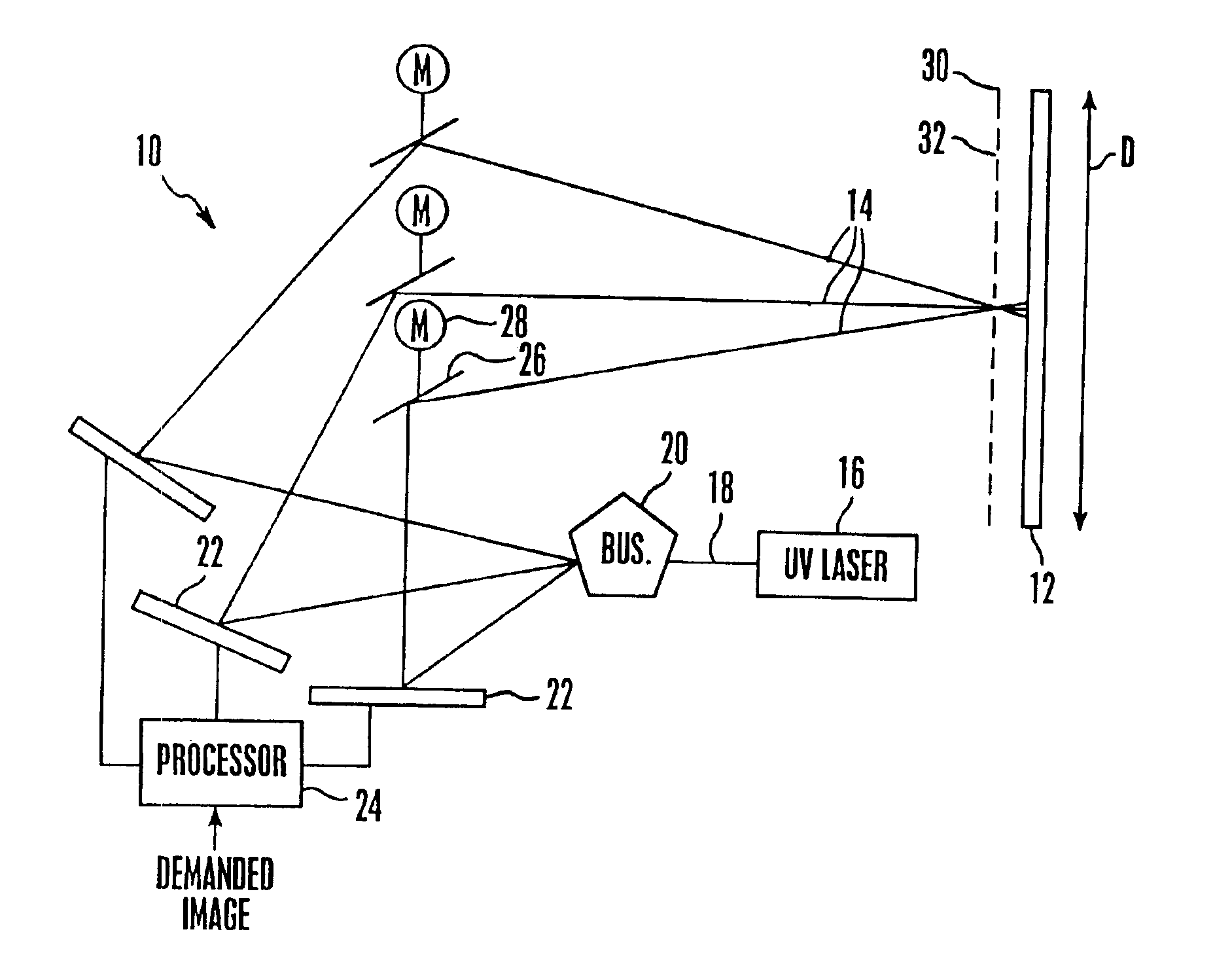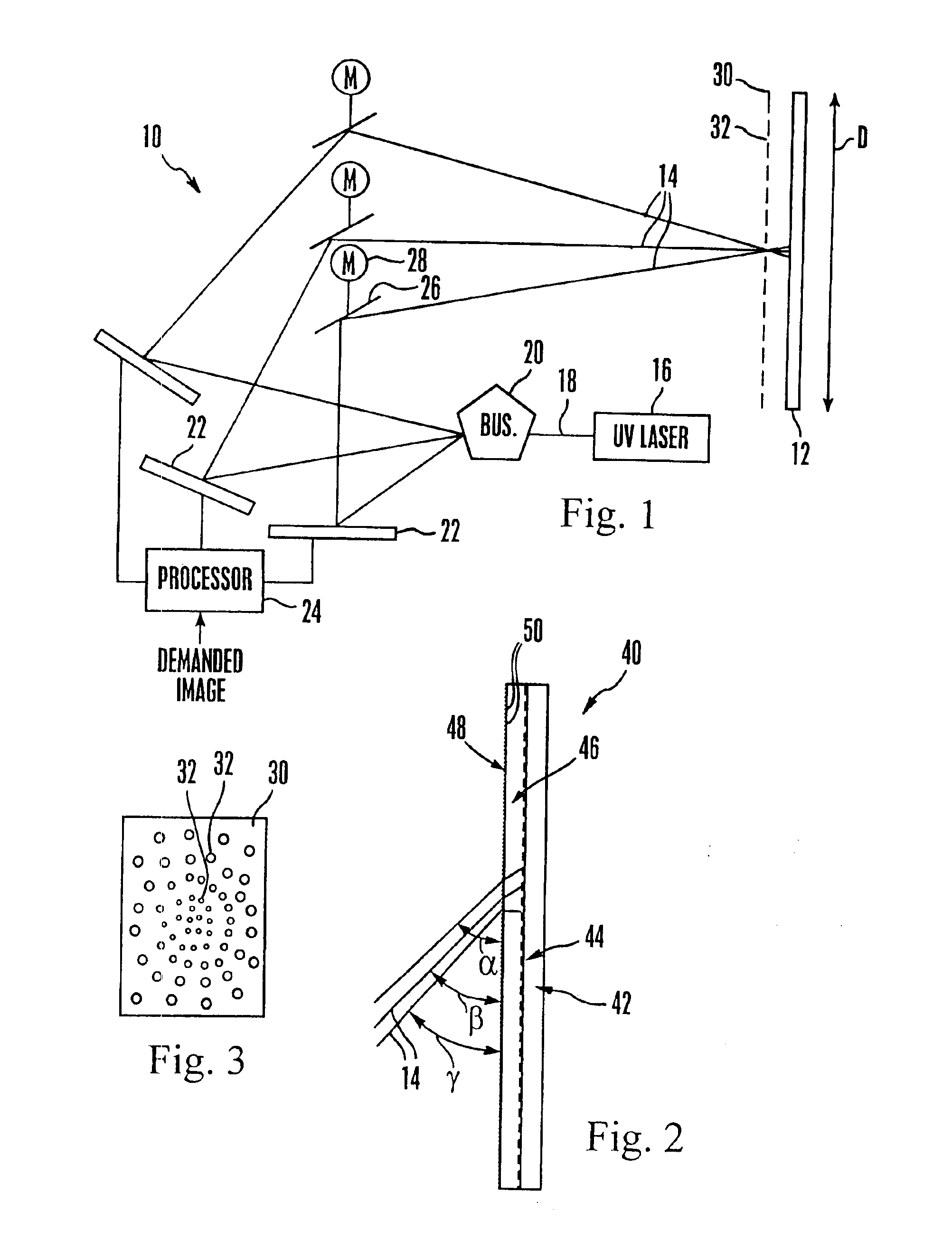Emissive image display apparatus
a technology of image display and emissive light, applied in the field of image display, can solve the problems of increasing manufacturing costs, affecting the image quality of large screen projection-type displays, and affecting the image quality of large-screen projection-type displays, and the current emissive display technology
- Summary
- Abstract
- Description
- Claims
- Application Information
AI Technical Summary
Benefits of technology
Problems solved by technology
Method used
Image
Examples
Embodiment Construction
[0017]Referring initially to FIG. 1, a display apparatus is shown, generally designated 10, which includes an emissive display 12 that defines plural pixels, each pixel in turn being defined by three subpixels in accordance with emissive display principles known in the art, namely, red, green, and blue subpixels. In the non-limiting illustrative embodiment shown in FIG. 1, the display 12 is a large screen phosphor display, the pixels of which may be composed of, e.g., Zinc Sulfide. By “large screen” is meant that the operational “D” of the display 12 is at least forty inches (40″) (about one hundred centimeters) and can be sixty inches (60″) (about one hundred fifty centimeters) or more. The principles advanced herein, however, can be applied to smaller displays, as well as to other emissive displays, such as plasma displays. In any case, owing to the structure disclosed below, the display 12 operates at atmospheric pressure, i.e., the display 12 does not require a vacuum in which t...
PUM
 Login to View More
Login to View More Abstract
Description
Claims
Application Information
 Login to View More
Login to View More - R&D
- Intellectual Property
- Life Sciences
- Materials
- Tech Scout
- Unparalleled Data Quality
- Higher Quality Content
- 60% Fewer Hallucinations
Browse by: Latest US Patents, China's latest patents, Technical Efficacy Thesaurus, Application Domain, Technology Topic, Popular Technical Reports.
© 2025 PatSnap. All rights reserved.Legal|Privacy policy|Modern Slavery Act Transparency Statement|Sitemap|About US| Contact US: help@patsnap.com


